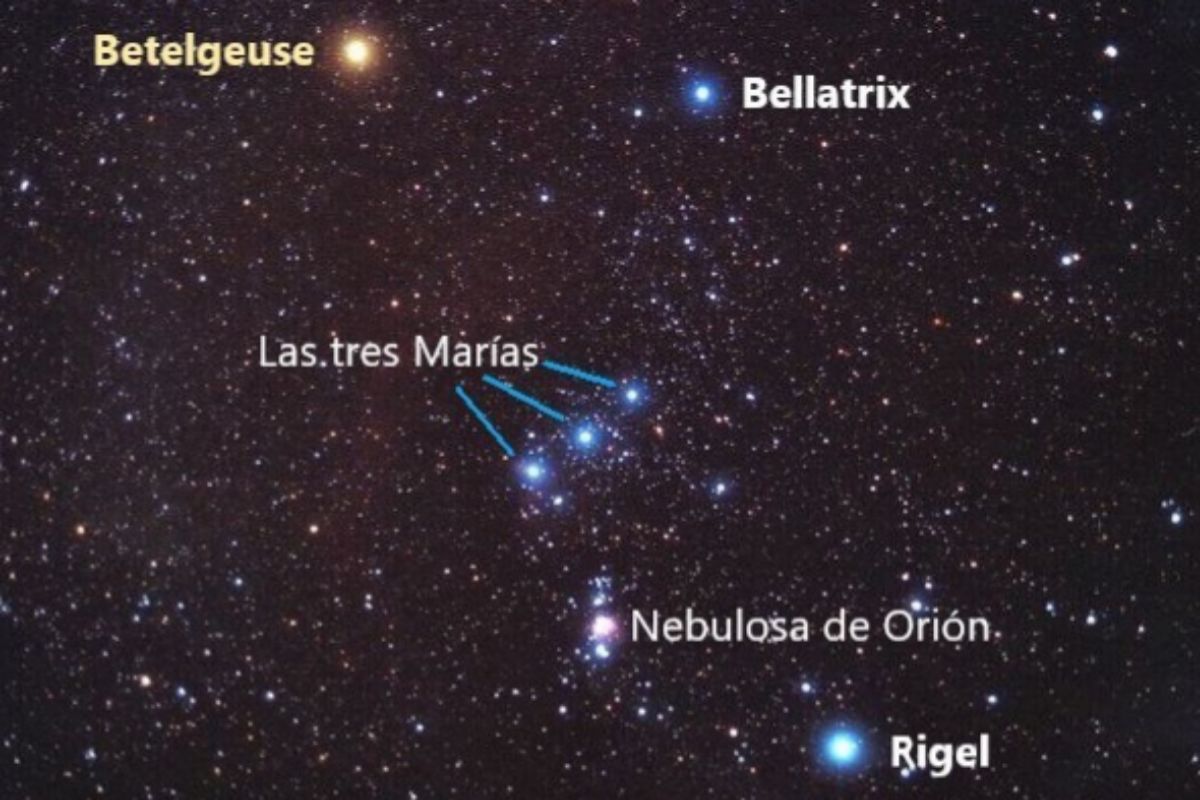Orion, the queen of the constellations, continues to dominate the winter night skies.
Let's also take advantage of these moonless nights to observe the Winter Hexagon, which is made up of six of the brightest stars in the sky.
From the piss of the gods
Orion, the giant hunter of Greek mythology, was born from the urine of the gods, hence his name.
In the sky, Orion appears equipped with a sword and a shield.
He is accompanied by his two hunting dogs, the Big Dog and the Little Dog, and chasing the Pleiades, the daughters of Titan.
Orion is a constellation that can be observed from both the northern and southern hemispheres, which is why it is known to cultures around the planet.
In these days of mid-February, Orion is visible, dominating the sky, from shortly after sunset until about 3:00 in the morning.
As the new moon has been on the 11th, we can enjoy these dark nights to observe its bright stars in optimal conditions.
The two brightest stars in the constellation are Rigel (on the hunter's leg) and Betelgeuse (on one of his shoulders), both of which are among the ten brightest stars in the sky.
Rigel is a triple system whose main star is an extremely luminous blue supergiant;
it is located about 860 light years from Earth.
Betelgeuse is somewhat closer, about 640 light years;
it is a cold red supergiant and in a very advanced state of evolution.
Also spectacular are "the three Marys": the three stars in Orion's belt that form one of the most distinctive stellar alignments in the sky.
Orion's main stars
In the constellation Orion are some of the most colorful nebulae in the sky.
These are large clouds of gas and dust that are about 1,500 light years from Earth.
They are the region closest to Earth where the formation of massive stars can be observed.
The so-called 'Orion Nebula' (M42) is one of the brightest known, it can be seen with the naked eye if we look closely at the central region of the hunter's sword.
It is one of the best studied stars in the sky.
There are numerous young stars surrounded by gaseous disks that are forming planets.
Winter hexagon
In the surroundings of Orion there are other stars also very bright.
Mentally joining six of them forms the distinctive 'Hexagon of Winter'.
It is not a constellation itself, but an asterism made up of stars from different constellations.
The Winter HexagonSTELLARIUM / RB
This huge hexagon is centered near Betelgeuse and its vertices are occupied by the already mentioned Rigel, Aldebaran (in Taurus), Capella (in Auriga), Pollux (in Gemini), Procyon (in Canis Minor) and finally Sirius (in Canis Major).
Sirius, the brightest star in the night sky, was identified by all ancient civilizations and has played an important role in several of them.
For example, in Egypt, his first appearance on the horizon, after the period in which he had remained invisible, marked the beginning of the time of the Nile floods.
Looking at the stars is always a relaxing activity that allows us to stay in contact with nature and that invites us to reflect and dream.
So let's take advantage of the wonders of the winter skies.
Observing the sky reminds us of our modest location in the universe and makes us reconsider the direction of our journey aboard this spaceship called Earth.
Rafael Bachiller is director of the National Astronomical Observatory (National Geographic Institute) and academic of the Royal Academy of Doctors of Spain.
According to the criteria of The Trust Project
Know more
Science and Health
science
Covid-19 The myth of the three waves: this is how we turn the March crisis into a chronic disease
AstronomyThe most energetic cosmic rays in the Milky Way
EnvironmentThe ocean soundtrack: how noise affects marine species
See links of interest
Work calendar
Baskonia-Joventut, live
RB Leipzig - FC Augsburg
Bologna - Benevento
Celta de Vigo - Elche
Granada CF - Atlético de Madrid, live

